DECISION MAKING IN UNCHARTERED WATERS – A 4-Part Series
Position Your Company for its Best Opportunity for Success
The #1 common denominator of great leaders and teams is the ability to make good decisions. Put another way, our ability to succeed is in direct proportion to our ability to solve problems.
With the world moving faster than ever before, sound decision making in these difficult times is especially critical, with the world as we know it is being completely reshaped by the pandemic.
Regardless of what we were doing four months ago, leaders are continually forced to make decisions at a pace and risk level they have never experienced, leaving many frozen with uncertainty in how to navigate the changing business landscape.
Gino Wickman’s e-book, DECIDE, offers inspiration and best practices to help build your decision-making muscle as you navigate through these unchartered waters and, more importantly, prepare for recovery during the post-COVID-19 world. He offers four discoveries for leaders to make better business decisions in volatile times. What follows is the first of four discoveries in this series of columns:
#1 You must have clarity of vision
If you’re running your company on EOS, you’ve got a Vision/Traction Organizer (V/TO) that serves as your company’s primary lens for tough decisions. If you’ve revisited your vision during the current crisis and you and your leadership team are 100% clear and aligned, you will lay the foundation to simplify your decision making as we navigate through the remainder of 2020 and beyond. Consider the 5 components of your vision:
Core Values. By using your Core Values to guide tough decisions you create a blueprint for strategic decision-making. We’ve all seen how restaurants have had to pivot almost daily to navigate the current times. Portillo’s Hot Dogs has an excellent example. With core values including Family, Greatness, Energy and Fun, they closed stores in certain markets that weren’t required to close for dine-in, because it was the “the right thing to do.” According to CEO Michael Osannloo, “If you’re an organization that lacks a ‘true north’ in values, that’s going to hurt you.”
Core Focus. Do your decisions support your company’s purpose and business niche? For example, perfume and beer manufacturers have shifted some facilities to produce hand sanitizer. These businesses have a Core Focus with a niche of creating alcohol, the key ingredient in sanitizer, which enables continuity, resiliency and good will for their business by providing a product that is key to fighting the pandemic.
Core Target: According to McKinsey & Company, about a quarter of companies today are redirecting and increasing their spend toward emerging opportunities in the current environment. Think about how you can positively affect your long-term revenue and profit targets. Whether it’s through e-commerce or acquisitions, prioritizing new revenue streams isn’t just a way to survive the crisis. What companies do today to capture revenue quickly lays the foundation for future growth.
Marketing Strategy: When businesses are subject to rapid change, marketing strategy should be reviewed. You have the opportunity to set the tone for how customers perceive your brand during a difficult time. Case in point: Employee or customer event-based companies who have been restricted on large gatherings are developing alternative marketing ideas to replace physical events through streaming delivery, online conference expos, webinars and other forms of virtual events. In addition, most companies are spending more on web-based content, as consumers are spending more time online than ever. Currently, there is a huge opportunity for businesses to build a strong foundation for long-lasting customer-brand relationships.
3-Year Picture: Now that you know who you are with Core Values, what you love to do with Core Focus, where you’re going with your Core Target and how you’re going to get there with your Marketing Strategy, you’ll want to create a clear picture of what your organization will look like in 3 years. This is your opportunity to think through the size and scope of your organization in preparation for a post-COVID-19 world. Your 3-Year Picture gets everyone’s energy is going in the same direction, eliminating confusion, murkiness, delays and bad decisions. Your people will be able to “see” where you’re going longer-term and determine if they want to be part of the plan. Once everyone sees the 3-year picture, you can make decisions to get there faster than if you didn’t have a 3-year picture at all.
The best entrepreneurs charge forward with confidence instead of holding back out of fear. Your V/TO provides a decision-making framework to help you work through obstacles and opportunities, solve issues at the root, gain more traction, and build organizational capabilities to position your company for its best opportunity for success.
I’m excited to present Part 1 of 4-Part series to help position your company for success !
